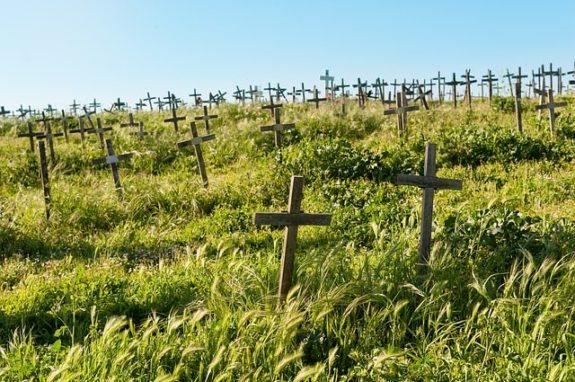
April 19, 2017; Tennessean
Could the next big thing for conservation nonprofits be as old as time? A Tennessee nonprofit is banking on burial to help preserve property at the state’s first-ever “conservation burial ground.” The idea joins the concept of green burial—one without chemicals or concrete—with the cause of protecting land from development.
The Green Burial Council maintains standards for the more than 300 providers offering natural burial around the country and coined the term “conservation burial.” Only five, however, are nonprofits with the explicit purpose of conservation.
Larkspur Conservation leaders, including an end-of-life doula and an Episcopalian priest, are planning for a 100-acre burial ground about 45 miles northeast of Nashville. The local county commission recently approved the initiative after a zoning change.
The nonprofit’s mission is “preserving land through the revival of traditional burial practices” and has been operating since 2013. On its website, Larkspur notes the difference between a natural burial at a traditional cemetery and the new concept:
[Conservation burial] calls for a cemetery’s adherence to a number of protocols to ensure that burials never degrade an ecosystem and, where possible, facilitate ecological restoration. Most significantly, conservation burial requires that an established, independent conservation organization, most often a land trust, serve as steward of this land and be willing to hold a conservation easement.
The popularity of modern “green burials” has grown since the first conservation burial ground in South Carolina opened in 1998, thanks to increasing interest in environmental footprint and aligning moral and religious values with the way we die. A green funeral can also be less expensive for surviving family members. According to the Green Burial Council:
Sign up for our free newsletters
Subscribe to NPQ's newsletters to have our top stories delivered directly to your inbox.
By signing up, you agree to our privacy policy and terms of use, and to receive messages from NPQ and our partners.
The standard conventional funeral, complete with embalming and burial in a lawn cemetery, is fraught with health hazards, and requires the permanent installation of non-biodegradable vaults around non-biodegradable caskets. […] Each year, the U.S. buries over 1.6 million tons of reinforced concrete…plus imported steel from China and exotic woods from rainforests in South America, creating a significant total of carbon emissions.
The movement has been so successful in the Nashville area that the Tennessean reports that a number of caskets are waiting to be buried at the new site. However, Larkspur must still close on the property, draft an easement with The Nature Conservancy, which owns a natural area next door, and fundraise for the purchase of 55 more acres. Could this be a model for land trusts and conservation societies, particularly as aging baby boomers plan their final legacies?
It’s possible that the idea of conservation areas with human remains under foot might be more palatable than expanding natural burials at traditional cemeteries, where there can be red tape and public pushback. In Massachusetts, for example, city-run and private cemeteries make their own policies on the use of concrete liners, according to the Medford Transcript, and some aren’t planning changes because there hasn’t been a demand for green burial. But, local green burial advocates argue that the restrictions can mean a lack of options for your final resting place, and have formed a nonprofit to advocate and search for viable land to establish the state’s first green cemetery, in partnership with a land conservation trust.
Even the Green Burial Council is looking to the new-ish model:
Most recently, the Council has leveraged its success to help foster a number of public-private partnerships wherein burial/scattering will provide a new means of connecting multi-generational constituencies to the land and to the cause of land conservation.
Let’s be clear: Green burial isn’t anything new, and some religions already prohibit embalming and the like. But, it’s a novel idea to be a physical part of your gift to the next generation. As John Muir best put it, “Come to the woods, for here is rest. There is no repose like that of the green deep woods… Sleep in forgetfulness of all ill. Of all the upness accessible to mortals, there is no upness comparable to the mountains.”—Anna Berry











